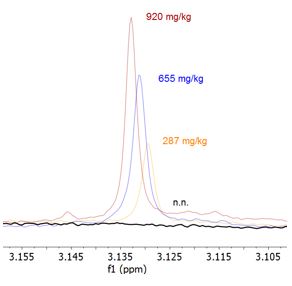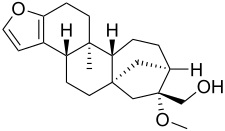Coffee Arabica or Robusta?
Coffee beans are one of the most traded goods worldwide and therefore prone to potential adulterations. Mainly the two kinds Arabica (Coffea arabica) and Robusta (Coffea canephora) are offered which vary in cultivation, taste, shape and prize.(1) Beans of Arabica are aromatic, mild, harmonic in taste and contain a high percentage of oils. Whereas beans of Robusta are tending to have a more earthy and wooded taste, are more bitter and are considered as less manifold. The coffee Arabica plant in contrast is very demanding. The Arabica plant needs a high air humidity, constant temperature of about 15-25 °C and is cultivated in high regions close to the equator. The Canephora (Robusta) coffee plant is more robust, more resistant to diseases, more yieldingly and economically more profitable. Therefore Robusta coffee is more cost-efficient in comparison to Arabica.(2)
How can the two kinds be distinguished?
Picture 1: 16-O-Methylcafestol.
Because of the price difference, Arabica is adulterated by adding Robusta for profit reasons. If a coffee contains Robusta, it cannot be labelled as “100 % Arabica”. Addition of Robusta can be proven by detection of 16-O-Methylcafestol (16-OMC).The compound 16-OMC is a diterpene that is only found in Robusta beans and therefore an excellent marker substance for the detection of adulteration.(3)
How can 16-OMC be analyzed?

Picture 2: NMR spectra of four different coffee samples. Shown are the values of the corresponding 16-OMC contents (n.n. not detectable).
The Robusta marker 16-OMC can be detected very fast and very reliable (see Picture 2). The NMR signal at 3.13 ppm is integrated and the content of 16-OMC can be calculated. According to DIN10779 a quantity of 130 mg/kg 16-OMC corresponds to a Robusta mixture ratio of 10 %. Typical coffee Robusta beans contain approximately between
600 and 800 mg/kg of 16-O-Methylcafestol.
Please feel free to contact us if you have any questions about the analysis of 16-O-Methylcafestol.
Email: info.qsi@tentamus.com
Phone: +49 (0)421 / 59 66 070
Contact form

